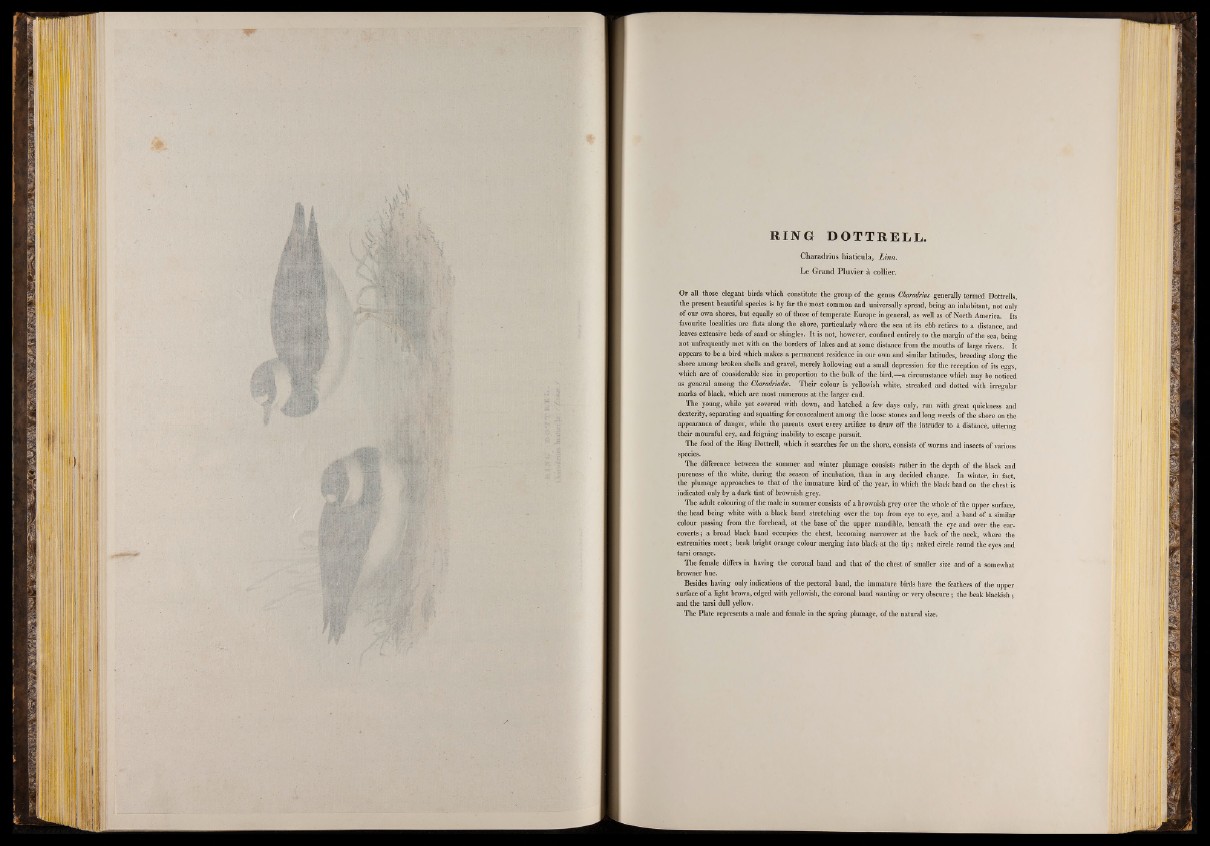
RING DO T T R E I L .
Charad rius hiaticula, Lin n .
L e G ra n d P lu v ie r k collier.
Of all those elegant birds which constitute the group o f the genus Charadrius generally termed Dottrells,
the present beautiful species is by far the most common and universally spread, being an inhabitant, not only
o f our own shores, but equally so o f those o f temperate Europe in general, as well as o f North America. Its
favourite localities are flats along the shore, particularly where the sea at its ebb retires to a distance, and
leaves extensive beds o f sand or shingles. It is not, however, confined entirely to the margin o f the sea, being
not unfrequently met with on the borders o f lakes and at some distance from the mouths o f large rivers. It
appears to be a bird which makes a permanent residence in our own and similar latitudes, breeding along the
shore among broken shells and gravel, merely hollowing out a small depression for the reception o f its eggs,
which are o f considerable size in proportion to the bulk o f the bird,— a circumstance which may be noticed
as general among the Charadriadas. Their colour is yellowish white, streaked and dotted with irregular
marks o f black, which are most numerous at the larger end.
The young, while yet covered with down, and hatched a few days only, run with great quickness and
dexterity, separating and squatting for concealment among the loose stones and long weeds o f the shore on the
appearance o f danger, while the parents exert every artifice to draw off the intruder to a distance, uttering
their mournful cry, and feigning inability to escape pursuit.
The food o f the Ring Dottrell, which it searches for on the shore, consists o f worms and insects o f various
species.
The difference between the summer and winter plumage consists rather in the depth o f the black and
pureness o f the white, during the season o f incubation, than in any decided change. In winter, in fact,
the plumage approaches to that o f the immature bird o f the year, in which the black band on the chest is
indicated only by a dark tint o f brownish grey.
The adult colouring o f the male in summer consists o f a brownish grey over the whole o f the upper surface,
the head being white with a black band stretching over the top from eye to eye, and a band o f a similar
colour passing from the forehead, at the base o f the upper mandible, beneath the eye and over the ear-
coverts; a broad black band occupies the chest, becoming narrower at the back o f the neck, where the
extremities meet; beak bright orange colour merging into black at the t ip ; naked circle round the eyes and
tarsi orange.
The female differs in having the coronal band and that o f the chest of smaller size and o f a somewhat
browner hue.
Besides having only indications o f the pectoral band, the immature birds have the feathers o f the upper
surface o f a light brown, edged with yellowish, the coronal band wanting or very obscure; the beak blackish •
and the tarsi dull yellow.
The Plate represents a male and female in the spring plumage, o f the natural size.